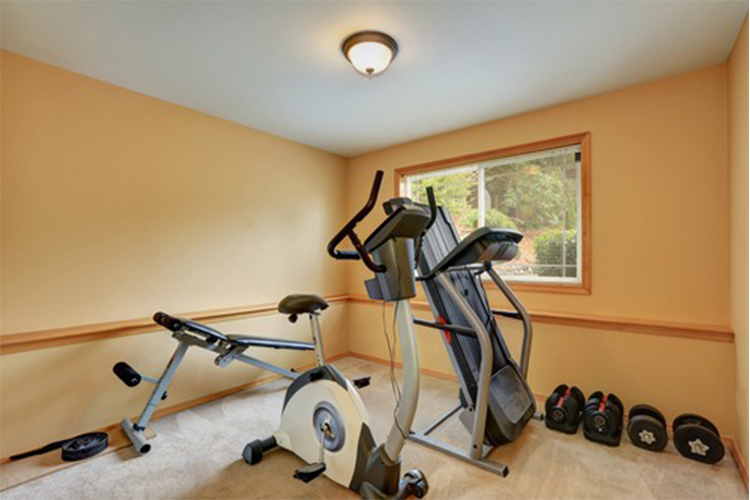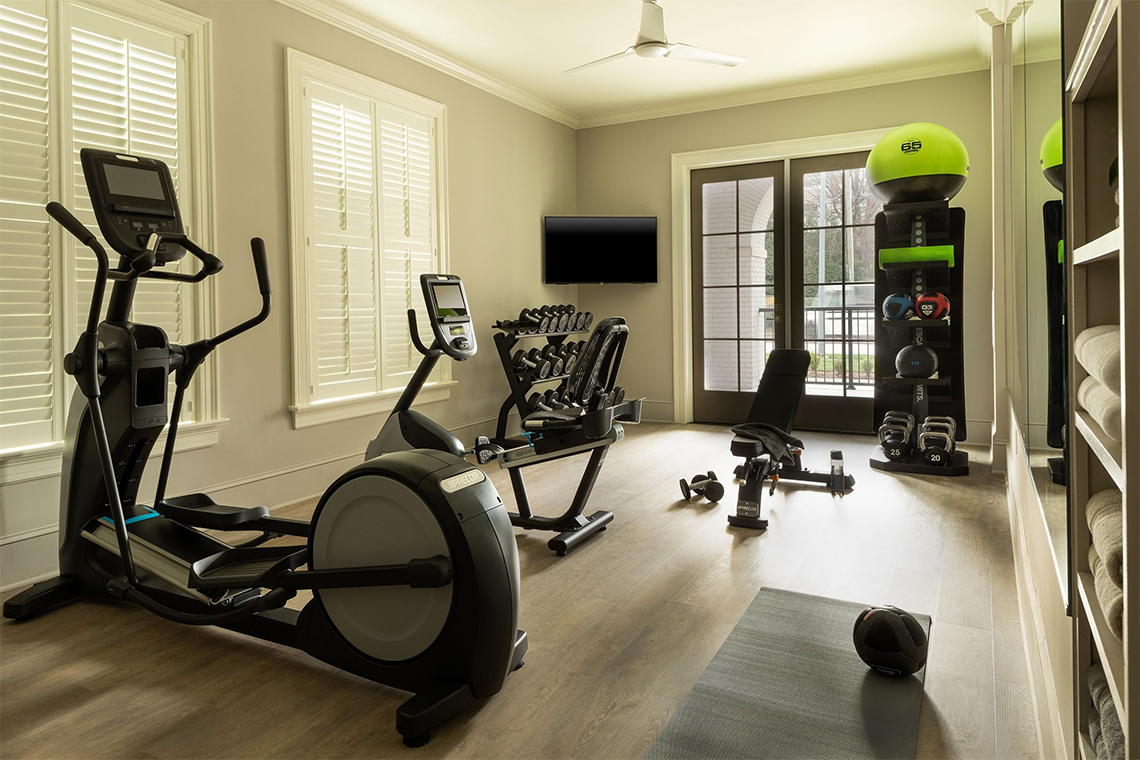In today’s busy world, it can be challenging to find time to exercise regularly. However, having the right fitness equipment at home can make it easier to stay on track with your fitness goals. If you have limited space, choosing the right fitness equipment is even more important. Here are some tips to help you choose the right fitness equipment for small spaces.
Consider your fitness goals
Before you start shopping for fitness equipment, you need to consider your fitness goals. Are you looking to build strength, improve flexibility, or increase cardiovascular endurance? Different types of fitness equipment are better suited to different goals. For example, if you want to build strength, you might consider purchasing a set of dumbbells or resistance bands. If you want to improve your cardiovascular endurance, a compact exercise bike or treadmill might be a better option.

Think about the space you have available
Once you have a clear idea of your fitness goals, you need to think about the space you have available. If you have limited space, you’ll want to look for equipment that can be easily stored when not in use. Consider the dimensions of the equipment you are interested in purchasing and measure the space where you plan to keep it. This will help you ensure that you choose equipment that fits comfortably in your home gym or exercise space.
Choose equipment that is versatile
When space is at a premium, it’s important to choose fitness equipment that is versatile. Look for equipment that can be used for multiple exercises, such as a stability ball, resistance bands, or adjustable dumbbells. This will allow you to get a full-body workout without taking up a lot of space.
Consider the noise level
If you live in an apartment or have neighbors in close proximity, you need to consider the noise level of the fitness equipment you are interested in purchasing. Some types of equipment, such as treadmills or ellipticals, can be quite noisy. Look for equipment that is designed to operate quietly, or consider purchasing a set of resistance bands or a yoga mat instead.
Read reviews and do your research
Before you make a purchase, be sure to read reviews and do your research. Look for equipment that is well-reviewed and has a reputation for quality and durability. You can also ask friends or family members for recommendations or consult with a fitness professional to ensure you are making an informed decision.
Consider the weight and portability of the equipment
When choosing fitness equipment for small spaces, it’s important to consider the weight and portability of the equipment. If you plan to store your equipment in a closet or under a bed, you’ll want to choose equipment that is lightweight and easy to move. Look for equipment that is designed to be portable, such as resistance bands, yoga mats, or jump ropes. If you do opt for larger equipment, such as a treadmill or elliptical machine, look for models that have wheels or can be easily folded for storage.
Choose equipment that is easy to use and requires minimal setup
Another important consideration when choosing fitness equipment for small spaces is how easy it is to use and set up. Look for equipment that is user-friendly and doesn’t require a lot of assembly or installation. This will make it easier to get started with your workouts and minimize the amount of time you spend setting up and taking down your equipment.

Consider equipment that offers a full-body workout
When space is at a premium, it’s important to choose fitness equipment that offers a full-body workout. Look for equipment that can be used for multiple exercises, such as resistance bands, adjustable dumbbells, or a pull-up bar. This will allow you to get a complete workout without taking up a lot of space.
Think about your budget
When choosing fitness equipment for small spaces, it’s important to consider your budget. While high-end equipment may offer more features and durability, it may not always be the best choice for your specific needs. Consider your fitness goals and choose equipment that meets your needs while also fitting within your budget. There are plenty of affordable options for home fitness equipment, such as resistance bands, jump ropes, and yoga mats, that can provide an effective workout without breaking the bank.
Think about storage
Storage is an important consideration when choosing fitness equipment for small spaces. Look for equipment that can be easily stored away when not in use, such as dumbbells that can be stored on a rack or resistance bands that can be rolled up and put away. If you’re short on space, consider equipment that can be hung on the wall, such as a pull-up bar or suspension trainer.
Consider equipment that can be used for different types of workouts
when choosing fitness equipment for small spaces, consider equipment that can be used for different types of workouts. For example, a stability ball can be used for strength training, balance exercises, and stretching. Resistance bands can be used for strength training, stretching, and even cardiovascular workouts. Choosing equipment that can be used for multiple types of workouts will help you get the most out of your investment and ensure that your fitness routine remains challenging and varied.
Try before you buy
Finally, it’s always a good idea to try out equipment before you buy it, especially if you’re purchasing more expensive equipment like a treadmill or elliptical machine. Try out different models at a gym or fitness store to get a sense of what features and functions are important to you, and to make sure the equipment is comfortable and easy to use.
In conclusion, when choosing fitness equipment for small spaces, it’s important to consider your fitness goals, the space you have available, the weight and portability of the equipment, how easy it is to use and set up, and your budget. By taking these factors into account and choosing versatile, high-quality equipment, you can create a home gym or exercise space that allows you to achieve your fitness goals without taking up too much space.












